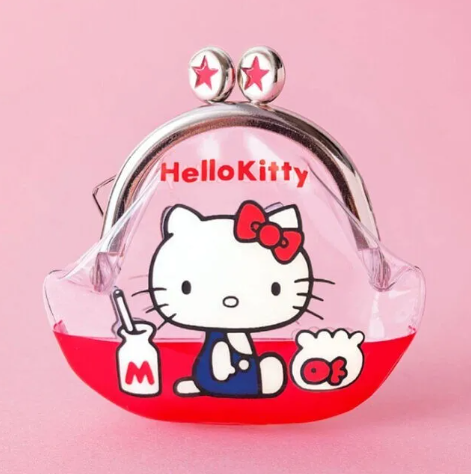Hello Kitty, the little white cat with a red bow on her head who is known by children and adults alike has been an International bestseller in children’s toys for years. With Hello Kitty’s brand worth a staggering $80.026 billion, one might wonder where this character came from and how she became an international icon.
On Aug. 10, 1960, Shintaro Tsuji founded a textiles company called Yamanashi Silk Center, the company which would eventually become Sanrio, the owners of the Hello Kitty brand. Later, Tsuji noticed that profits gained by adding on his items, so he hired Yuko Shimizu, a cartoonist, and she created Hello Kitty’s Iconic design.  Finally, in 1974, the first ever item featuring Hello Kitty was created- a vinyl coin purse. Hello Kitty’s design was featured before this in other designs, but this is the first design that featured the character’s name, being originally known as ‘the white kitten with no name.’ This changed, however, when the cartoonist Shimizu read Lewis Carol’s Through the Looking Glass, where Alice plays with a cat she calls ‘Kitty.’ From there, the name ‘Hi Kitty’ was considered before Tsuji and Shimizu finally landed on ‘Hello kitty’.
Finally, in 1974, the first ever item featuring Hello Kitty was created- a vinyl coin purse. Hello Kitty’s design was featured before this in other designs, but this is the first design that featured the character’s name, being originally known as ‘the white kitten with no name.’ This changed, however, when the cartoonist Shimizu read Lewis Carol’s Through the Looking Glass, where Alice plays with a cat she calls ‘Kitty.’ From there, the name ‘Hi Kitty’ was considered before Tsuji and Shimizu finally landed on ‘Hello kitty’.
Shimizu left her role as Lead designer in 1976, a position that would eventually be given to Yuko Yamaguchi, the current designer of Hello Kitty. Around this time, Sanrio was looking beyond their home country, opening a gift shop in the United States in 1976, where Hello Kitty increased Sanrio’s sales sevenfold. Not only that, her popularity was also increasing in Japan due to their growing economy, as children could afford to buy Hello Kitty’s products. Originally, Hello Kitty’s marketed audience was mainly young children, proven by the United Nations Children’s Fund, or UNICEF, naming Hello Kitty as children’s ambassador to the United States in 1983, and the release of the American children’s show Hello Kitty’s Furry Tale Theater in 1987.
In the 90’s, however, Sanrio broadened their target market to include teenagers and young adults, as it was considered a retro brand. So, they began using nostalgia to market to these audiences, selling laptops, purses, and other products. This caused an even greater growth to the Sanrio brand, especially in the United States. American celebrities like Mariah Carey even adopted Hello Kitty into their fashion. At her peak, Hello Kitty was Japan’s country’s top-grossing character, but her peak didn’t last forever. In 2002, she lost her place, with audiences saying she wasn’t “compelling enough to draw many fans.”
Despite losing popularity in Japan, Hello Kitty’s journey to fame was just beginning overseas, appearing on 12,000 new products each year. By 2008, Hello Kitty was featured in over 50,000 different Hello Kitty branded products in more than 60 countries.  She was named Japan’s official tourism ambassador to China, hoping to draw in overseas fans of Hello Kitty to visit Japan. As of 2014, 90% of the profits from Hello Kitty came from licensing of products for the international market, with Hello Kitty being recognized by more than 80% of young adults in the 18–23 age group in the United States as of 2016.
She was named Japan’s official tourism ambassador to China, hoping to draw in overseas fans of Hello Kitty to visit Japan. As of 2014, 90% of the profits from Hello Kitty came from licensing of products for the international market, with Hello Kitty being recognized by more than 80% of young adults in the 18–23 age group in the United States as of 2016.
With the rising growth of Japanese Fashion styles in the United States in recent years, Hello Kitty and other Sanrio characters have been in the media more often. Celebrities like Saweetie and Dua Lipa even wore clothing featuring Hello Kitty, considered to be Spring 2023’s biggest fashion trend, according to Teen Vouge. Overall, from her creation almost half a century ago, Hello Kitty has made her way into the hearts of children and adults alike, with her newest show Hello Kitty: Super Style!, released just a year ago exclusively on Amazon Kids+. While Hello Kitty might not always be the most popular character in the media, she is one that will always be remembered.


